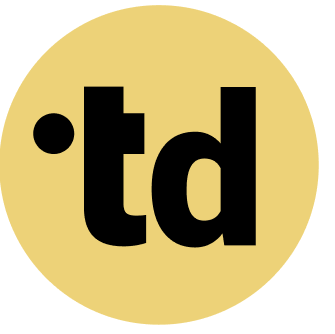Key Takeaways
Building a hybrid human-AI team requires more than technology; it demands a new approach to organizational development focused on augmenting human skills.
The Human-in-the-Loop (HITL) model is a critical governance framework that builds trust, ensures accountability, and is mandated by regulations like the EU AI Act for high-risk systems.
Success should be measured with new KPIs like cognitive load reduction and decision accuracy, focusing on how well AI enhances human performance, not just on automation.
In today's complex work environment, teams often face overwhelming demands and significant change fatigue. The solution isn't just another tool, but a new way of working. Structuring a hybrid human-AI team-where technology augments human talent-is the key to conquering this chaos. This approach transforms AI from a disruptive force into a collaborative partner. For Team Architects, this means designing new team structures that boost productivity and foster innovation. This guide provides the blueprint for creating resilient, high-performing hybrid teams.
Practical Framework for Team Architects
As a Team Architect, you can apply these principles to your organization:
- Map Current State: Document existing roles and responsibilities using a tool like teamdecoder.
- Identify Gaps: Where are roles unclear? Where do humans and AI agents overlap?
- Define Clear Boundaries: Specify which tasks are handled by humans vs. AI agents.
- Create Accountability: Assign clear decision rights for each role.
- Iterate and Improve: Continuously refine based on team feedback.
The Hybrid Imperative: Why Human-AI Teams Are the Future
The adoption of artificial intelligence is accelerating across Europe. In 2024, nearly 14 percent of EU enterprises are using AI, a significant increase of over five percentage points from 2023. Large enterprises lead this charge, with over 41 percent already integrating AI technologies. This isn't just a trend; it's a strategic shift in organizational development. Teams are the heroes fighting information overload, and a hybrid model is their most powerful tool. Combining human creativity, empathy, and intuition with AI's rapid information processing creates a system of hybrid intelligence that makes better, faster, and more ethical decisions. This synergy is essential for navigating modern business complexity and achieving sustainable performance. The goal is to move beyond AI as a simple tool and embrace it as a dynamic team partner, a core principle in effective human-AI augmentation . This new structure sets the stage for defining clearer roles and responsibilities.
Architecting Your Hybrid Team: Defining New Roles and Responsibilities
For Team Architects, the challenge is to design roles that leverage the unique strengths of both humans and AI. This isn't about replacing people but augmenting their capabilities. In 2024, 33 percent of European companies identified employee qualification as a top investment priority for AI integration. This highlights the need for new competencies within a hybrid team. A successful hybrid team structure requires humans to act as strategists, ethicists, and trainers for their AI counterparts. This creates a socio-technical system where people and technology are governed by clear organizational structures. Our Playful Tip: Think of your AI as a new team member that needs onboarding. Define its tasks, its reporting lines, and how it will request human input. This simple step clarifies roles from day one. A deeper look into this process reveals the importance of a structured framework for creating team structures. With roles defined, the next step is to manage the interaction between human and machine.
Make Bots and Humans Click: The Human-in-the-Loop Model
The most effective way to structure collaboration is through a Human-in-the-Loop (HITL) model. This framework builds trust by inserting human oversight directly into the AI lifecycle. The EU's AI Act, under Article 14, mandates this approach for high-risk systems to ensure natural persons can oversee their functioning. It's a core component of modern change management. The HITL model ensures AI serves as a co-pilot, not an autopilot, making recommendations that humans validate and approve. This keeps strategic decision-making firmly in human hands, reducing automation bias. You can try teamdecoder for free to map these complex interactions. Here are four key benefits of the HITL approach:
- It improves model accuracy by using human feedback to refine AI outputs over time.
- It enhances safety by allowing people to intervene and prevent erroneous decisions.
- It provides accountability, as humans can explain the reasoning behind a final choice.
- It helps mitigate algorithmic bias by flagging unfair outcomes for review.
This collaborative process requires a thoughtful implementation plan to manage the transition.
Implementing the Dream Team: A Four-Step Change Management Plan
Successfully launching a hybrid team hinges on effective change management. A German study highlights that involving employees from the outset is critical to address uncertainties and promote acceptance. Despite excitement from most leaders about AI, most of European employees worry about job disruption. A structured plan bridges this gap. Our Playful Tip: Launch a pilot project focused on a single, high-value process to demonstrate immediate benefits and build momentum. Here is a proven four-step approach for a smooth transition:
- Define a Clear Vision: Identify the specific business problems AI will help solve and set measurable goals for the hybrid team.
- Integrate and Strategize: Understand AI's impact on people and processes, then develop a strategy that addresses these changes directly.
- Communicate Effectively: Share the vision and benefits with all stakeholders to build support and ensure Many people understands the new AI-supported workflows.
- Train and Empower: Equip your team with the skills needed to work alongside AI, turning apprehension into confidence.
With the team implemented, establishing clear governance is the next crucial step.
Hybrid Team Governance: From Chaos to Clarity
Without clear governance, even the best hybrid teams can falter. A lack of strategy often leads to siloed AI projects that fail to scale and integrate with core business processes. Effective governance provides the rules of engagement for human-AI collaboration, ensuring consistency, safety, and alignment with organizational goals. This framework is essential for scaling AI initiatives beyond isolated experiments. Deep Dive: For a robust governance model, align your standards with established frameworks like DIN EN ISO 9241, which focuses on usability, effectiveness, and user satisfaction in system design. This ensures your hybrid team operates efficiently and ethically. Our Playful Tip: Create a simple "AI Rulebook" that outlines when to use AI, how to verify its outputs, and who to contact for support. This simple document can prevent many common pitfalls in human-AI teams. Once governance is in place, you can focus on measuring what truly matters.
Teams Just Wanna Have Fun: Measuring Hybrid Success
Measuring the success of a hybrid team goes beyond traditional productivity metrics. It requires a focus on the quality of collaboration and its impact on human performance. Teams Just Wanna Have Fun when they feel empowered, not monitored. Key Performance Indicators (KPIs) should reflect the unique advantages of this new team structure. For instance, one KPI could be the reduction in time taken to analyze complex datasets, a clear indicator of AI's contribution. The goal is to measure how AI augments human capabilities, not just automates tasks. Here are five KPIs to track for a holistic view of performance:
- Decision Accuracy: Track the percentage of AI-assisted decisions that are validated as correct by human experts.
- Cognitive Load Reduction: Survey team members to assess how much AI reduces mental strain during demanding tasks.
- Task Handoff Efficiency: Measure the time and clarity of transitions between AI and human inputs in a workflow.
- Team Satisfaction: Use regular pulse surveys to gauge how employees feel about their AI collaborators.
- Innovation Rate: Monitor the number of new products, services, or process improvements generated by the hybrid team.
By tracking these metrics, you can continuously refine your approach to performance measurement and build a truly effective team. See our pricing.
Try teamdecoder for free - shape your team and make change feel like play!
More Links
Denkfabrik BMAS offers insights into generative AI technology scenarios and their impact on work until 2030.
acatech explores how AI can foster greater participation in the world of work.
Bertelsmann Foundation provides a summary of a study on AI jobs in Germany.
BCG presents a report on AI at work, detailing current momentum and persistent gaps.
Fraunhofer IAO offers a scenario report on digital technologies, including insights relevant to AI.
DFKI showcases their research in interactive machine learning, a key area for human-AI collaboration.
BMAS provides a brochure on working with artificial intelligence, offering governmental perspectives.
FAQ
What is a hybrid human-AI team?
A hybrid human-AI team is a collaborative structure where humans and artificial intelligence systems work together as partners. The AI handles data processing and repetitive tasks, while humans provide strategic oversight, creativity, and ethical judgment to achieve shared goals.
Why is change management important for AI integration?
Change management is crucial because integrating AI transforms workflows and roles, which can create uncertainty among employees. A structured approach ensures Many people understands the benefits, receives proper training, and feels involved in the process, which is key to successful adoption.
What is the Human-in-the-Loop (HITL) principle?
Human-in-the-Loop (HITL) is a model where a human is Often involved in the decision-making process of an AI system. The AI provides analyses and recommendations, but a human makes the final judgment, ensuring accountability, safety, and ethical oversight.
How can I start building a hybrid team in my organization?
Start small with a pilot project that targets a specific, high-impact business problem. Define clear roles, establish a simple governance framework, and measure success with relevant KPIs. This allows you to demonstrate value quickly and learn before scaling.





